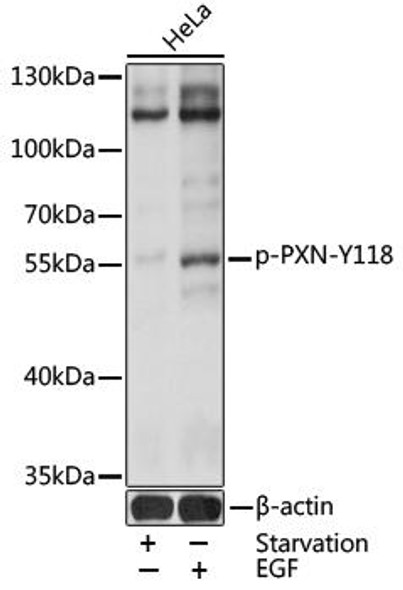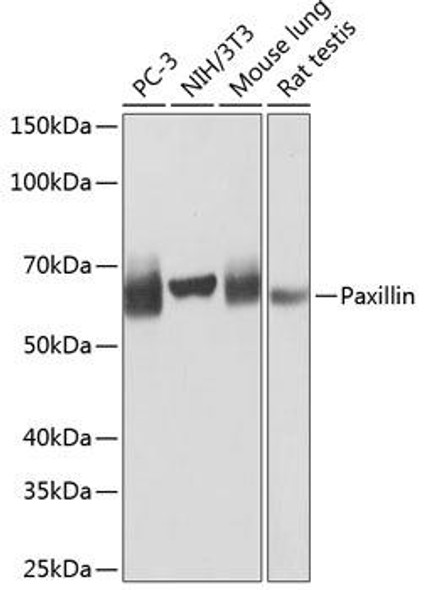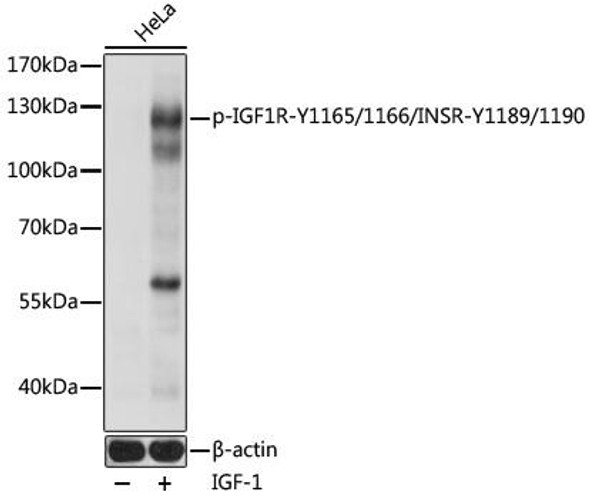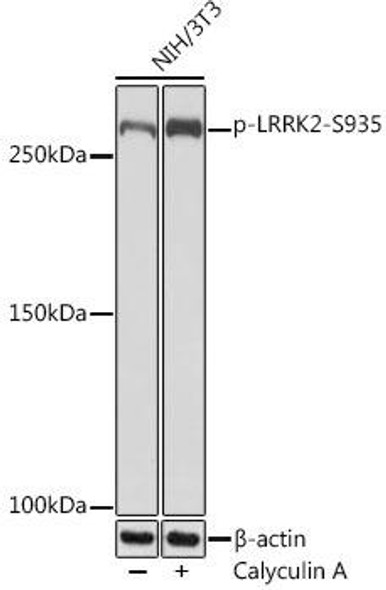Description
Anti-Phospho-Paxillin-Y118 Antibody (CABP1156)
The Phospho-Paxillin (Y118) Rabbit Monoclonal Antibody (CABP1156) is a valuable tool for researchers studying phosphorylation events in cell signaling pathways. Paxillin is a cytoskeletal protein involved in cell adhesion and migration, with phosphorylation at tyrosine 118 regulating its function. This antibody, generated in rabbits, specifically targets the phosphorylated form of paxillin at tyrosine 118, allowing for precise detection and analysis in various cell types.The antibody is validated for use in Western blot applications and has high reactivity with human samples, making it an ideal choice for studies in cell biology and cancer research.
Understanding the role of phosphorylated paxillin in cellular processes can provide insights into mechanisms of cancer progression, cell migration, and invasion. Additionally, this antibody can help researchers explore potential therapeutic targets related to paxillin phosphorylation in diseases such as cancer and other pathologies.Overall, the Phospho-Paxillin (Y118) Rabbit Monoclonal Antibody (CABP1156) offers a reliable and specific tool for investigating the function of phosphorylated paxillin in cellular signaling pathways, with potential applications in both basic research and drug development efforts targeting cancer and other diseases.
| Antibody Name: | Anti-Phospho-Paxillin-Y118 Antibody |
| Antibody SKU: | CABP1156 |
| Antibody Size: | 20uL, 50uL, 100uL |
| Application: | WB |
| Reactivity: | Human, Mouse, Rat |
| Host Species: | Rabbit |
| Immunogen: | A phospho specific peptide corresponding to residues surrounding Y118 of human Paxillin |
| Application: | WB |
| Recommended Dilution: | WB 1:500 - 1:2000 |
| Reactivity: | Human, Mouse, Rat |
| Positive Samples: | A-431, NIH/3T3, C6 |
| Immunogen: | A phospho specific peptide corresponding to residues surrounding Y118 of human Paxillin |
| Purification Method: | Affinity purification |
| Storage Buffer: | Store at -20°C. Avoid freeze / thaw cycles. Buffer: PBS with 0.02% sodium azide, 0.05% BSA, 50% glycerol, pH7.3. |
| Isotype: | IgG |
| Sequence: | Email for sequence |
| Gene ID: | 5829 |
| Uniprot: | P49023 |
| Cellular Location: | |
| Calculated MW: | 68kDa |
| Observed MW: | 75kDa |
| Synonyms: | |
| Background: | This gene encodes a cytoskeletal protein involved in actin-membrane attachment at sites of cell adhesion to the extracellular matrix (focal adhesion). Alternatively spliced transcript variants encoding different isoforms have been described for this gene. These isoforms exhibit different expression pattern, and have different biochemical, as well as physiological properties (PMID:9054445). [provided by RefSeq, Aug 2011] |
| UniProt Protein Function: | PXN: a multi-domain cytoskeletal protein involved in actin-membrane attachment that localizes primarily to focal adhesion sites to the extracellular matrix. Phosphorylated by focal adhesion kinase (FAK) and is a component of integrin signaling. Its phosphorylation provides docking sites for recruitment of signaling molecules to focal adhesions. Binds in vitro to vinculin as well as to the SH3 domain of c-SRC and, when tyrosine phosphorylated, to the Crk SH2 domain. Interacts with GIT1, NUDT16L1/SDOS, PARVA and TGFB1I1. Component of cytoplasmic complexes, which also contain GIT1, ARHGEF6 and PAK1. Binds DDEF2. Interacts with unphosphorylated ITGA4. Interacts with RNF5.Three alternatively-spliced isoforms have been described. Isoform beta binds to focal adhesion kinase but weakly to vinculin. Isoform gamma binds to vinculin but only weakly to focal adhesion kinase. |
| UniProt Protein Details: | Protein type:Adaptor/scaffold; Cytoskeletal; Motility/polarity/chemotaxis; Cell adhesion Chromosomal Location of Human Ortholog: 12q24.31 Cellular Component: nucleoplasm; microtubule associated complex; focal adhesion; lamellipodium; cytoplasm; stress fiber; plasma membrane; cell cortex; cytosol Molecular Function:integrin binding; protein binding; zinc ion binding; beta-catenin binding; BH4 domain binding; protein kinase binding; vinculin binding Biological Process: integrin-mediated signaling pathway; lamellipodium biogenesis; epidermal growth factor receptor signaling pathway; focal adhesion formation; regulation of cell shape; peptidyl-tyrosine phosphorylation; branching morphogenesis of a tube; muscle contraction; activation of MAPK activity; transforming growth factor beta receptor signaling pathway; signal complex assembly; cytoskeleton organization and biogenesis; vascular endothelial growth factor receptor signaling pathway; signal transduction; cell adhesion |
| NCBI Summary: | This gene encodes a cytoskeletal protein involved in actin-membrane attachment at sites of cell adhesion to the extracellular matrix (focal adhesion). Alternatively spliced transcript variants encoding different isoforms have been described for this gene. These isoforms exhibit different expression pattern, and have different biochemical, as well as physiological properties (PMID:9054445). [provided by RefSeq, Aug 2011] |
| UniProt Code: | P49023 |
| NCBI GenInfo Identifier: | 317373486 |
| NCBI Gene ID: | 5829 |
| NCBI Accession: | P49023.3 |
| UniProt Secondary Accession: | P49023,O14970, O14971, O60360, Q5HYA4, B2RAI3, B7ZMB4 |
| UniProt Related Accession: | P49023 |
| Molecular Weight: | 68kDa |
| NCBI Full Name: | Paxillin |
| NCBI Synonym Full Names: | paxillin |
| NCBI Official Symbol: | PXN |
| NCBI Protein Information: | paxillin |
| UniProt Protein Name: | Paxillin |
| Protein Family: | Paxillin |
| UniProt Gene Name: | PXN |
| UniProt Entry Name: | PAXI_HUMAN |











